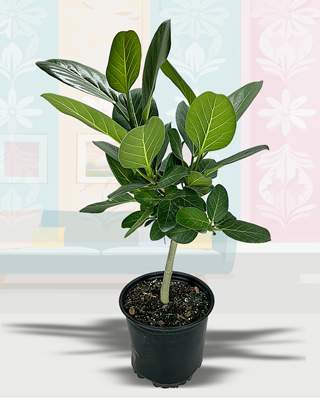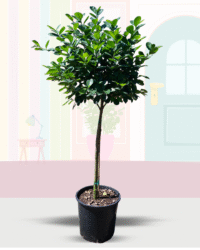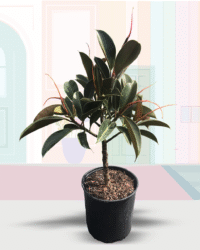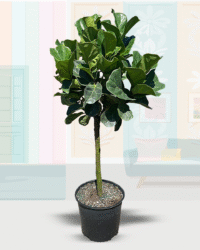Description
The Ficus Audrey is recognized as the national tree of India. It has a light colored trunk, and long, slender fuzzy leaves. It is popular as an indoor plant.
Also known as Fig Trees, and over 850 different species, one of the largest genera of flowering plants. Ficus is a pantropical genus of trees, shrubs, and vines occupying a wide variety of ecological niches; most are evergreen, but some deciduous species are found in areas outside of the tropics and to higher elevations. Fig species are characterized by their unique inflorescence and distinctive pollination syndrome, which uses wasp species belonging to the family Agaonidae for pollination.
Views: 95
Care Instructions
Light Exposure
Watering
Fertilizing
Dimensions
Other
Ficus can stand up to direct, full sunlight, but is also comfortable with indirect light as well. Would prefer clear windows with at least half a day of sunlight.
Allow top 2-3 inches of soil to dry between watering. Keep moist, as they do take a lot of water.
Use general houseplant fertilizer at about half strength, and fertilize about once a month during the summer; you shouldn't need to fertilize during the winter. If you use a liquid fertilizer, be careful to not splash it on the leaves.
These trees can reach 5-6 feet tall, with a 3 foot spread, while in pots. Outdoor planting can get much larger. Ficus trees can be used in any arrangement, both indoors and outdoors. Outdoors many species of Ficus can grow quite large. It is important that outdoor Ficus roots are kept pruned.
PLEASE NOTE THAT THIS PLANT IS CONSIDERED TOXIC TO CHILDREN AND PETS.
Flowering occurs year round in warm climates, but the flowers in many fig trees are not seen because they are in the fruit!




